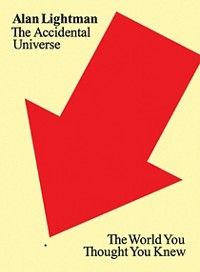Advertisement
Grab your lab coat. Let's get started
Welcome!
Welcome!
Create an account below to get 6 C&EN articles per month, receive newsletters and more - all free.
It seems this is your first time logging in online. Please enter the following information to continue.
As an ACS member you automatically get access to this site. All we need is few more details to create your reading experience.
Not you? Sign in with a different account.
Not you? Sign in with a different account.
ERROR 1
ERROR 1
ERROR 2
ERROR 2
ERROR 2
ERROR 2
ERROR 2
Password and Confirm password must match.
If you have an ACS member number, please enter it here so we can link this account to your membership. (optional)
ERROR 2
ACS values your privacy. By submitting your information, you are gaining access to C&EN and subscribing to our weekly newsletter. We use the information you provide to make your reading experience better, and we will never sell your data to third party members.
Policy
Sticks in the Mud
A trip to the corner office reveals the link between cave drawings and chemistry
by BY RICK MULLIN
December 6, 2004
| A version of this story appeared in
Volume 82, Issue 49
On a recent trip to the American Chemical Society headquarters in Washington, D.C., C&EN's New Jersey-based business writers were given a tour of the executive suite by their former editor-in-chief, ACS Executive Director and CEO Madeleine Jacobs. For me, the most interesting part of the tour was the artwork of her husband, Joe Jacobs, which is well represented throughout the space.
Which does not denigrate the bison or the horse--or, more to the point, the drawing of the drawing of the bison or the horse. Design is often obscured within the finished picture, but the picture can emerge and evolve only from initial design.
Drawing is, after all, the most basic form of visual art. It is essential to all further-evolved fine arts, such as painting and sculpture. Dance, music, and drama also derive from linear design. The caveman making drawings with a stick in the mud got everything started, and he has been with us ever since.
Contemplating the genesis of artwork should launch musings on big questions like "What makes us human?" Being in Rome (figuratively), however, I did as the Romans and channeled my thoughts into a narrower question: the fate of the chemist in the increasingly multidisciplinary world of science, or "What makes us scientists?"
This question has sparked a great deal of hand-wringing among chemists who see their discipline wilting. It is not so vexing to those in the chemical industry, however. It is a question fraught with delightful irony, in fact, when viewed pragmatically, as it would be by any industrialist who needs scientists to get work done.
Clearly, anyone resisting chemistry's merger with biology and physics into a more multidisciplinary science is resisting evolution. Theodore D. Goldman said as much in a recent letter to the editor--one of many on the "crisis of chemistry" that ran in the Nov. 8 issue of C&EN.
Is this a case of scientists bucking nature? The hand-wringers are doing so. The irony resides in the fact that so many in the "pure science" camp--largely academic chemists who see themselves as champions of unfettered inquiry and disinterested exploration--are taking a worried, conservative stance, while industry spryly bends and stretches with the changes.
Chemistry-based multidisciplinary science is nothing new to pharmaceutical and specialty chemical companies, which have been cultivating and managing mixed teams in R&D for years. Markets require manufacturers to adapt. Those adaptations almost always offer opportunities for workers who are willing to change. Chemical company managers ultimately understand that you have to steer into the skid, that if you try to resist an inevitable trend, you end up like the nuclear or tobacco industries.
On page 68 of the Feb. 16 issue, C&EN Editor-at-Large Michael Heylin measured that skid. His bar graph, based on figures from the National Science Foundation, shows that the number of traditional chemistry Ph.D.s awarded has declined slightly from more than 2,200 in 1970 to just under 2,000 in 2002. The number of chemistry-related Ph.D.s awarded in the same period more than doubled to almost 3,000 annually.
There is little doubt that the jobs of the future require scientists to grasp physical and life sciences in addition to pure chemistry. Universities will need to restructure their curricula, and associations will have to redirect their support mechanisms to produce and enhance biophysichemists, nanomolecular engineers, atomic geo-atmosphericists, and whatever other specialists evolve. Heylin's chart indicates that this move is already under way. Will ACS have to change its name? That seems like an overreaction, but if a name change is unavoidable, change it.
As for chemistry holding its own as a discipline, there is simply not a problem. Remember the caveman with the stick? This time, he or she has an Erlenmeyer flask: no drawing--no painting; no chemistry--no biology. Anyone who has studied can tell you that there is no way to biology but through chemistry.
In fact, chemists can find real solace in the drawing/chemistry analogy if they look at Western art over the past 60 years, a time during which drawing went on a temporary hiatus. As the self-proclaimed illuminati announced a future of pure abstraction, the true cognoscenti scowled, grabbed drawing sticks, and prevailed.
Today, once more, artists have to draw in order to get a degree in art--even if the drawing is done on a computer. Similarly, when science goes off the track, as it often does, it will likely be a chemist, or a biophysichemist in the role of a chemist, who will save the day. Tradition!
Perhaps all hand-wringers should make a pilgrimage to the ACS executive suite. They will find it filled with orchids and thought-provoking artwork. Forms of nature abound, reminding art lover and chemist alike that there is really nothing to worry about.
Views expressed on this page are those of the author and not necessarily those of ACS.





Join the conversation
Contact the reporter
Submit a Letter to the Editor for publication
Engage with us on Twitter